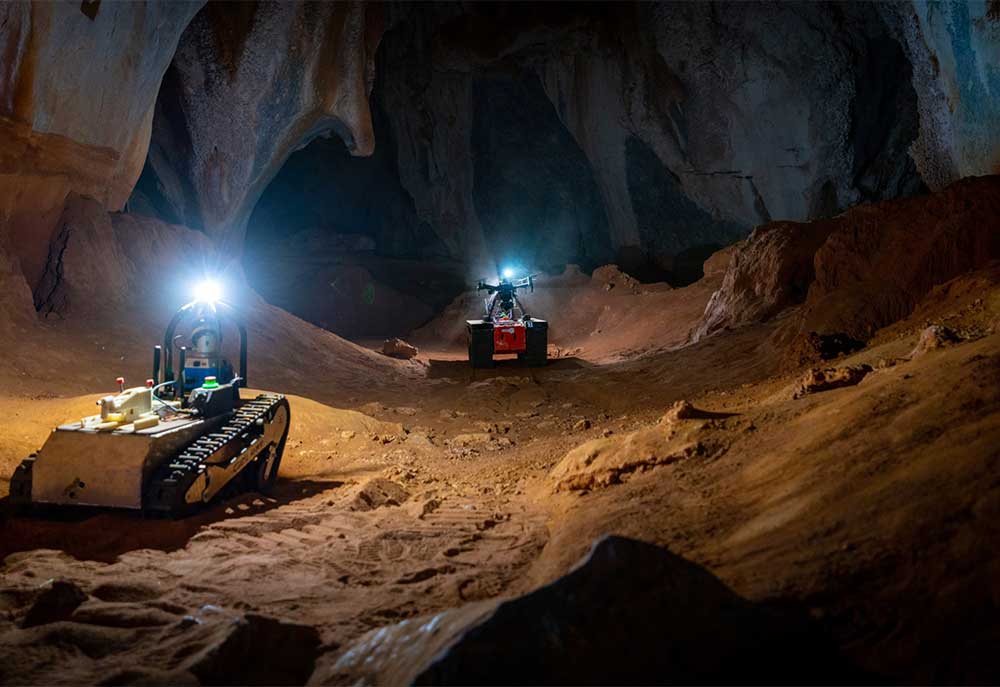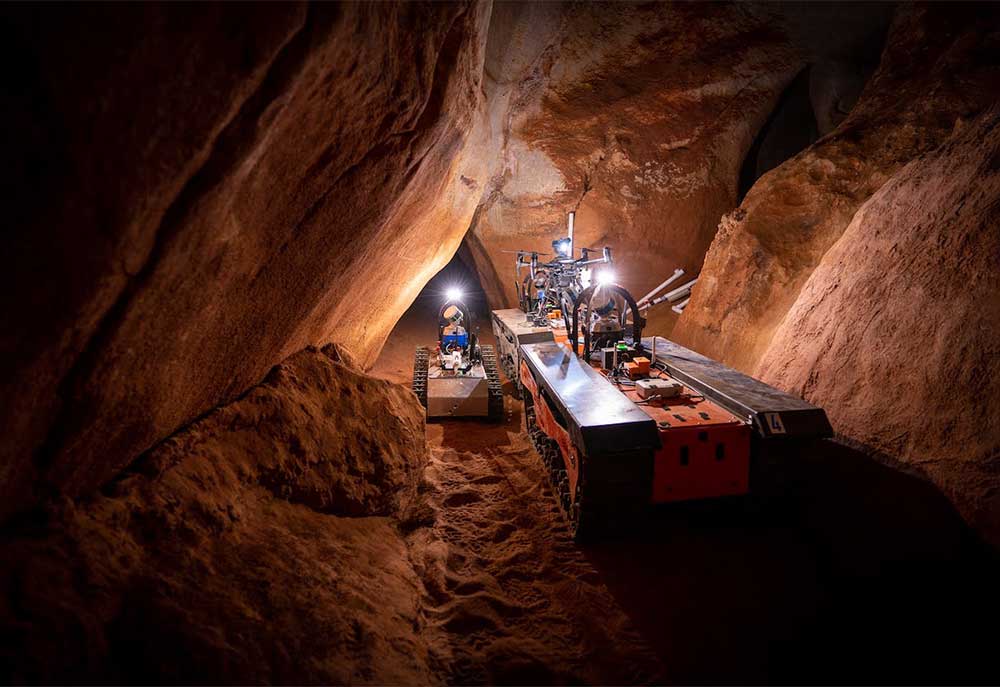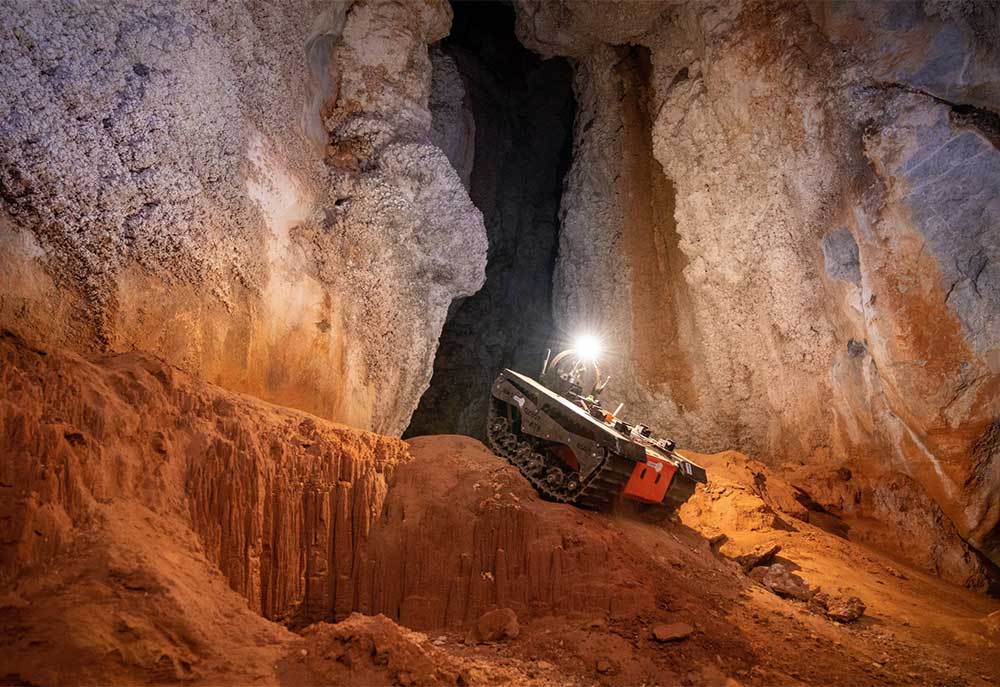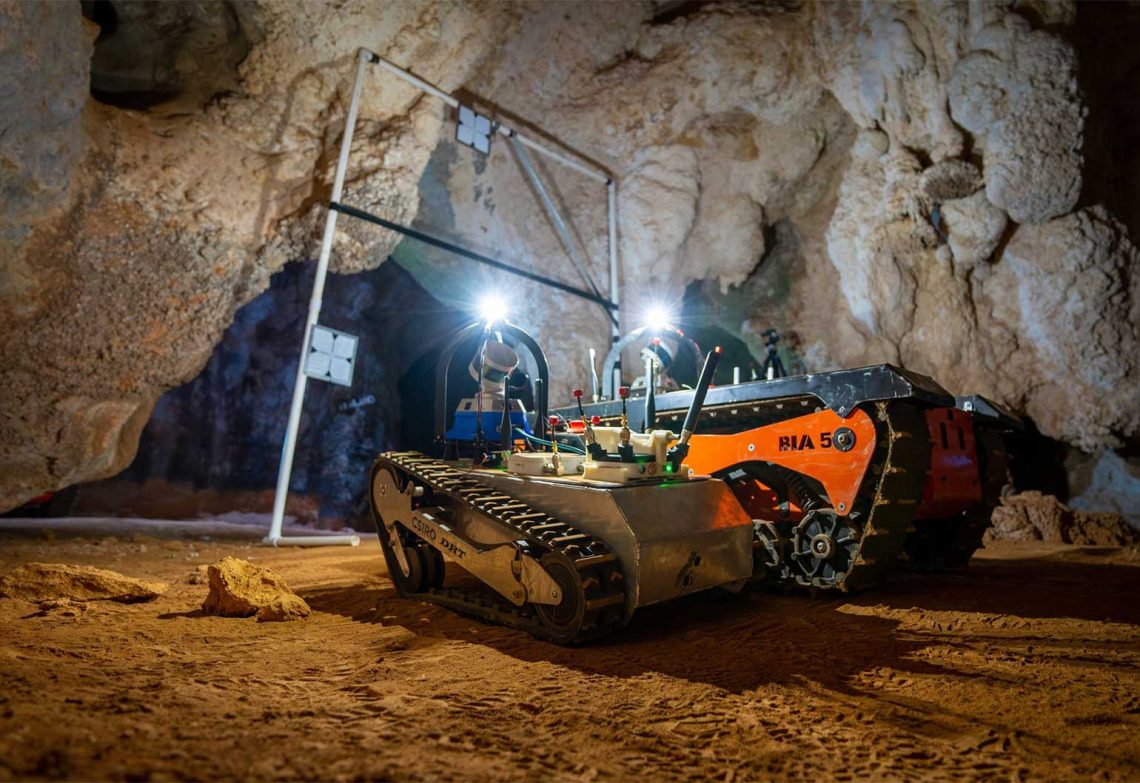The world’s leading robotics competition, held in the United States this month, will welcome a Brisbane-based team of CSIRO experts representing both Australia and the Southern Hemisphere.
The team, from CSIRO’s research arm Data61, will test six autonomous robots on a series of underground caves inside a subterranean environment of the Louisville Mega Cavern in Kentucky.
Run by the US Defense Advanced Research Projects Agency (DARPA), the challenge sees experts pushing the boundaries of autonomous robotic technology. Features like autonomy, communication and durability all become crucial elements of the robot’s design. Teams are eliminated after every challenge, until eventually only eight remain in the competition.
Mechatronics engineer Ryan Steindl is the hardware engineering lead of the team, and told create about how they were selected to participate in the DARPA Grand Challenge in 2018.
“It was a pretty daunting task when they handed it out and it was quite fascinating; this concept that they would have these three terrains: a human terrain, a natural terrain, and a tunnel terrain combined,” Steindl said.
“How can you get a robot to do this?”





Exploring the cave
The challenges are designed to simulate real-world scenarios and involve locating models representing humans, phones or backpacks. Points are awarded for correct identification and location of items, mapping the terrain and maintaining communications throughout the challenge.
“The first year-and-a-half was really about engaging with what the competition was about and performing well. There was a huge balance between building systems that could compete and building systems that were able to try new things,” Steindl explained.
“We were in this realm of building a medium-sized tech support robot that was dynamic. It was something that could walk about one metre per second, because we had an hour to run the course and had to cover a kilometre of scale.”
About 1650 teams compete in the event, which is popular with student teams as it is designed to spark their interest in pursuing careers in engineering and technology.
All the Australian team’s robots are equipped with hardware designed and developed by Data61, including integrated perception technology for highly accurate mapping, localisation, object detection, multi-bot navigation, Bluetooth and Wi-Fi detection. The perception system software enables the vehicle to act autonomously and undertake a mission without human intervention.
This is vital during the challenge, as communication within the caves becomes increasingly difficult when the robots traverse deeper underground. The CSIRO’s robots have the ability to drop small communication nodes as they venture deeper into the cave, allowing the robots to maintain contact and tell the humans where the objects are located.
“At the middle point in the competition, we started focusing more on autonomy in relation to communication: how can you get your robots to continue exploring and returning you good information?” Steindl said.
“We at CSIRO do field robotics, we test in the field every week. The rigorous testing of designs, codes was key to getting the balance right between trialling new features and hardware versus developing to address the new platforms in the real world.”
The winning team will receive $2.74 million to conduct further research and development, with second place awarded $1.37 million and third $690,000.
Various advancements in robotics technology have stemmed from the DARPA Challenge, including improvements in manufacturing and mining safety.
“It’s been really good to represent Australia in this field. We have our own special problems like preparation; our robots have to get more prepared and shipped earlier,” Steindl said.
“It’s good that we’re competitive. It’s a comfort to look over to the guys in the US as equals and not being so far ahead of us.”



